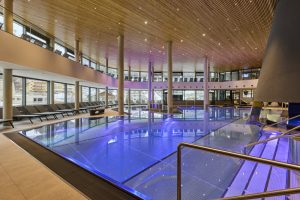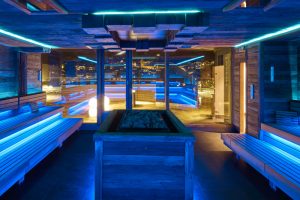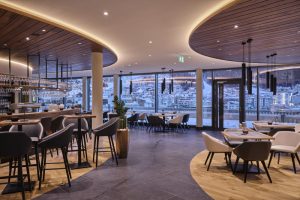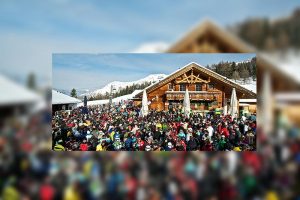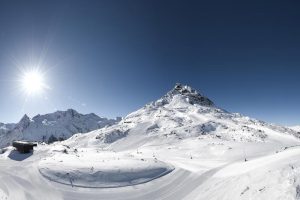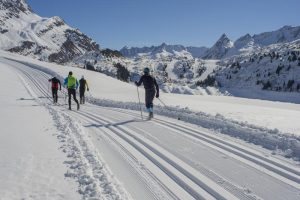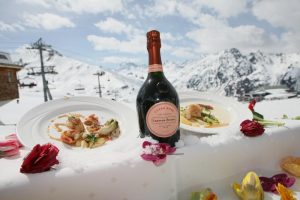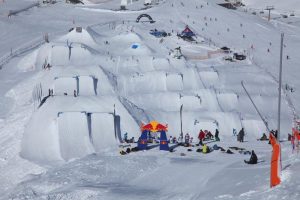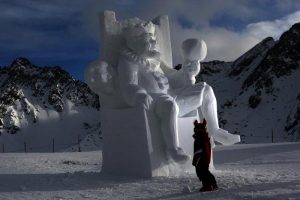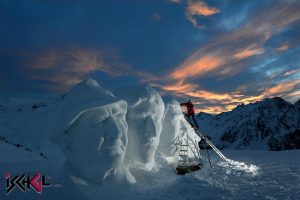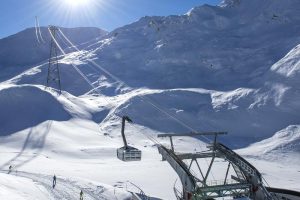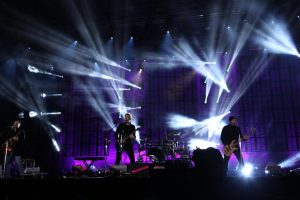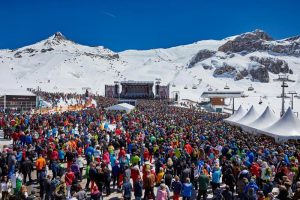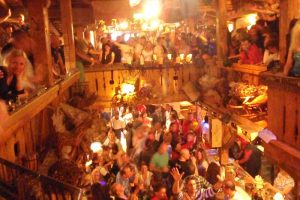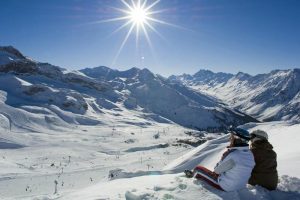Winter
Amazing, spectacular, sporty, but also megalomaniacal and crazy… This is Ischgl, one of the best ski resorts in the Alps and maybe even the world.
This is where the High Society meets to celebrate winter and everything that goes with it. The famous après ski bars and nightly lavish entertainment have also made Ischgl a name for itself. Ischgl is also called the Ibiza of the Alps – true to its motto – Relax…if you can!
Up to 238 km of pistes and 515 hectares of skiable terrain. It should be pointed out that Ischgl, or Silvretta Arena as the whole area is called, is also one of the few international ski mega-zones that connect multiple countries, i.e. Austria and Switzerland. Ischgl is also one of the largest connected areas in terms of kilometres of slopes, with 45 lifts, of course the most modern ones, and an hourly capacity of 93,000 skiers. The slopes are covered by 1100 snow cannons. And every night, 36 snowmobiles are working hard on the slopes. Ischgl’s longest ski slope, the “Eleven”, is 11 km long and has an elevation gain of almost 1,500 metres. The steepest is the black 14a, which has a gradient of up to 70 percent in places. And watch out – 20 of Ischgl’s lifts end above 2,600 metres, and seven end above 2,800 metres. Nowhere else in Austria has this and you’ll find it very few places in Europe. This means, firstly, that the slopes are very high, because Ischgl itself, where the slopes end, is at an altitude of 1,400 metres.
Secondly, excellent snow conditions, because the whole Silvretta Arena is situated above average (skiing is guaranteed from the end of November to the beginning of May, thanks to the snowmaking. And thirdly, breathtaking panoramas.
But it’s not just the dizzying number of kilometres of pistes and super-modern lifts that make Ischgl Ischgl. The resort’s great location in the countryside has helped a lot, but so has its hard work and excellent long-term planning. The high location, usually great snow conditions, rugged and long runs, almost unbelievable views, excellent service, good food in the mountain huts, rich accompanying and also night program.
One of the most spectacular Ischgl experiences, however, is the long red “Duty Free Run” from the nearby Palinkopf peak (2,864 m) to the Swiss Samnaun (1,840 m); at the start you can also choose the black option. It first winds through beautiful high plains and then drops below the massive cliff of Piz Ot. Chamois are commonly seen climbing the snow-covered cliffs. Only the final part is a bit flat and boring, but the reward is a trip to the only duty-free zone in the land of the Helvetic Cross. You don’t necessarily need to shop for watches or perfume, at least stop for a coffee. Samnaun has a completely different atmosphere to Ischgl.
The relatively high altitude location is smaller, quieter and more family friendly. Further descents there lead the other way from the summit of Greitspitze (2 872 m) or Viderjoch (2 732 m) via the Alp Trida. Even the return journey from Samnaun to Ischgl is an experience in itself. Skiers are carried up against the jagged rock wall by giant jumbo lifts, one of which is even double-decker.
The 11-kilometre descent from Greitspitz across the Idalp plateau to the centre of Ischgl is also a decent skiing experience. But for the way down, you can choose from a whole combination of black, red and blue runs. And finally, from Greitespitz there is the aforementioned dreaded super steep “14”. Another beautiful scenic run in Silvretta is the less frequented run number “Seven”, which runs from Velillscharte (2,556 m) through the Velilltal valley to Ischgl. It is one of the most beautiful in the whole area.

